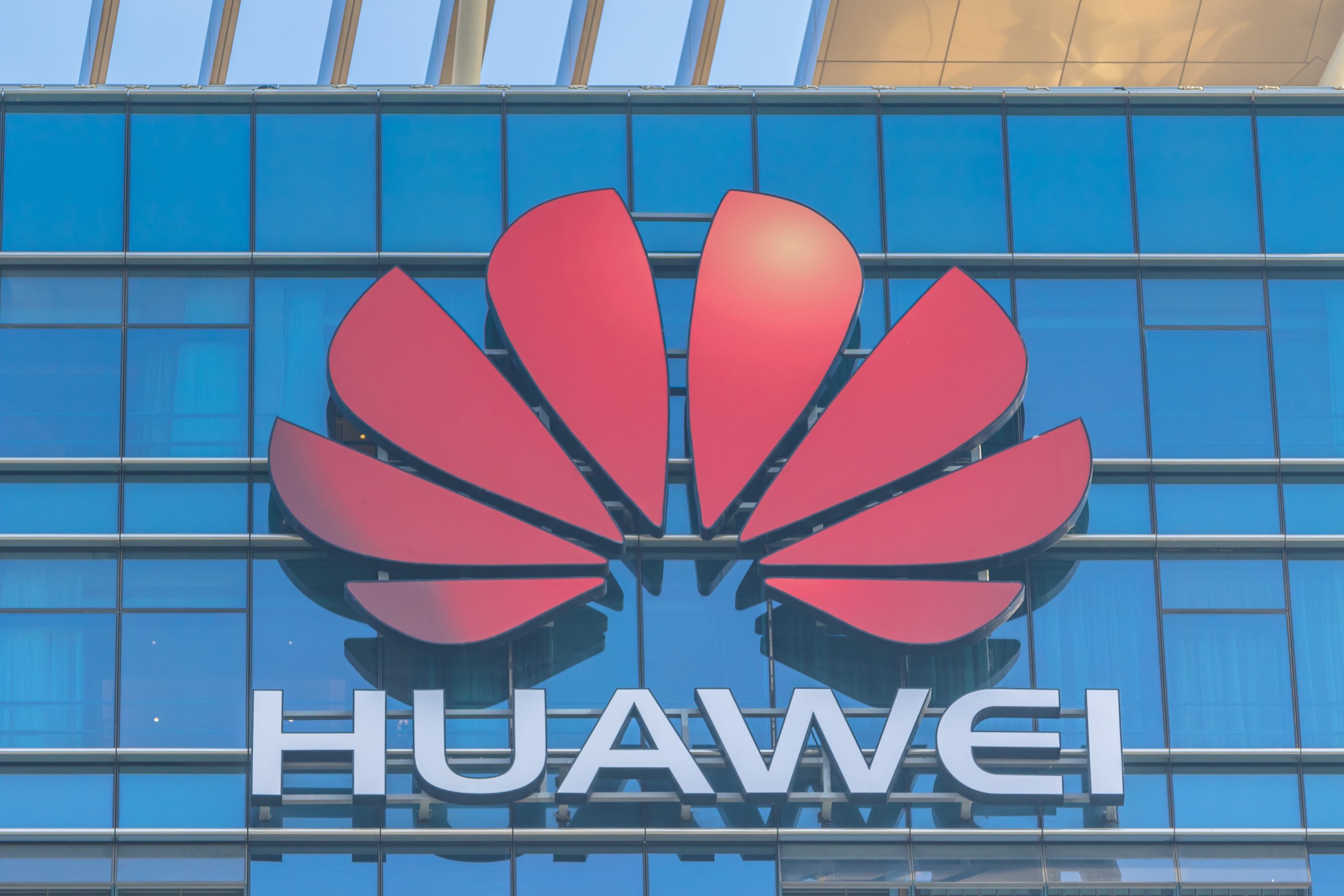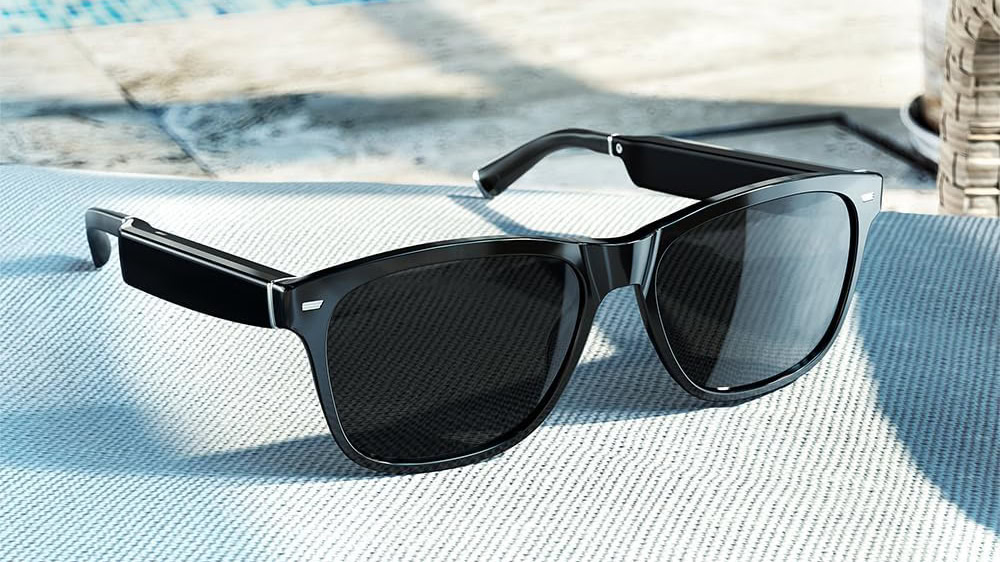On its 50th birthday, no look at the Microsoft of yesterday and tomorrow would be complete without the iconic Microsoft Surface computer. From its roots as an R&D showpiece to today’s premiere Windows tablet PC, the Surface line has morphed and grown—sometimes awkwardly—and transformed the face of modern computing. PCMag has covered the Surface through every iteration, year after year.
I was witness to much of it. Early in my tech-journalism career, I attended the New York City press event where Microsoft’s chief product evangelist, Panos Panay, introduced what we know as a Surface tablet to the world in 2012. But the Surface story starts earlier than that. Let’s rewind the tape to where Surface really began, with something called, at various times, “Project Milan,” “PlayTable,” and ultimately, “Microsoft Surface.”
Microsoft’s Bold Experiment: The Birth of Surface
In 2007, the first Microsoft Surface wasn’t a compact, convenient tablet PC at all—it was a piece of furniture. Intended as a multi-user device that would showcase Microsoft’s then-new PixelSense technology, the Surface was a 30-inch touch-screen display that also served as a coffee table. PixelSense was a new take on touch screens; it used integrated sensors and five infrared cameras to track fingertips and swiping motions. It also allowed specialized tags and objects to interact with images on the screen.
Dan Costa, PCMag’s previous editor-in-chief, called the scratch-proof, spill-proof device “a pleasure to use” and said after a hands-on demo, “I really want one.”
The first Surface wasn’t a tablet at all, but a table. (Credit: PCMag)
Like most consumers, he may have been hard-pressed to afford one, though. This early Surface was based on DLP projector technology and designed mainly for businesses. Outlets like Popular Mechanics, at the time, quoted prices between $5,000 and $10,000 for Surfaces in interactive shopping installations, tourist attractions, and doctors’ offices. With support for multiple users, the giant touch screen was genuinely innovative but limited in appeal—one part all-in-one computer, one part interactive exhibit.
In 2011, Microsoft rebranded the technology as PixelSense (freeing up the Surface name for a new line of consumer products). Samsung then released a redesigned version called the Samsung SUR40 with Microsoft PixelSense. It was still the size of a table but markedly thinner, costing a “mere” $8,400 for the display alone. (The full table setup sold for $9,049.)
A Tablet Revolution: Surface’s Big Shift, and the Arm Alliance Begins
Touch-screen systems and tablets had existed in one form or another since the late 1980s, and Microsoft had been pitching pen input with heavy, bulky tablet PCs since 2003. But the iPhone debuted in 2007, with capacitive touch-screen devices genuinely taking off around 2010 with Apple’s seminal iPad. As iOS and Android devices started to change the landscape of personal computing, the PC community needed something more capable than PixelSense, better suited to doing everyday work and handling the tasks and programs that made the business world turn.
Microsoft made a major move in 2012, releasing Windows 8, an operating system built around touch-screen experiences and marked by big, bold tiles and icons. This reimagined the desktop OS for the new environment. But the company wasn’t settling merely for software.

Microsoft’s Surface RT tablet (Credit: Microsoft)
That same year, Microsoft revived the Surface name with its first Surface tablet, a 10.6-inch slate awkwardly called the Surface with Windows RT (later shortened to Surface RT). Though not Microsoft’s first hardware product, it was the first fully Microsoft-built consumer PC and the first in what would become an essential product line in the tablet and laptop market—and an inspiration for other PC makers.
However, this first effort was more of a proof of concept. While we praised the design, many observers and shoppers were disappointed that Windows RT was a branch for Microsoft’s then-new Arm processor instruction set, not a mainstream x86 platform with support for the apps and features that made Windows the dominant force in laptops. The tablet OS left many users confused and disappointed. RT had limited app support—basically none, except for a port of Microsoft Office—and availability restricted to digitally signed programs from the Windows app store.
Regardless, the Surface RT introduced some significant hardware innovations, from the integrated kickstand to the keyboard cover that has become a staple of detachable 2-in-1 tablets today. The tablet itself was impressively slim and light, with a handy full-size USB port and microSD card slot. Inside, it housed just 2GB of memory, a 1.3GHz quad-core Nvidia Tegra 3 processor with integrated graphics, and a 64GB storage drive. This loadout was considered decent for a tablet, if not a proper PC.

The first Surface Pro, packing Windows 8 (Credit: PCMag)
Surface tablets, as we know them today, got rolling soon after, however. A full-featured x86-based tablet PC arrived in early 2013 in the form of the Microsoft Surface Pro. Keeping the same 10.6-inch display and tablet-plus-keyboard-cover design, it was a little thicker and featured an Intel Core processor. That hardware upgrade also allowed the Surface Pro to use the full version of Windows 8, a big step forward in meeting laptop-level functionality with the tablet form factor. At the time, this move to x86 was essential for the brand’s development.
The Portfolio Expands: Surface Book and Surface Hub
Moving to Intel hardware and Windows 8.1 helped grow the brand through the professional Surface products. Surface Pro revisions released in late 2013 and mid-2014 demonstrated to Microsoft’s partners what was possible in detachable-tablet designs while attracting die-hard Windows fans. The following year, Microsoft expanded the line again with the first Surface Book, a variant closer to a conventional laptop, with a detachable tablet screen but a firmer, more laptop-like base. (2015 also saw the Surface 3 switch from Arm-based Nvidia Tegra CPUs to the x86-based Intel chips.)

The Microsoft Surface Book and its unique hinge (Credit: PCMag)
With a design that bridged the gap between tablet and laptop PCs, the 2-in-1 detachable Surface Book ditched the usual clamshell hinge design, opting for a flexible docking connection that let the screen separate and function as another Surface tablet. With a 13.5-inch screen and a dock that allowed mounting the display in either forward- or backward-facing orientation, it was an interesting entry into a crowded market of 2-in-1 systems that was evolving in parallel, led by Lenovo’s Yoga line. The docking latch was electronic, for some gee-whiz coolness, but a predictable point of failure for users over the long term. This laptop/tablet hybrid also shunted all the connectivity to the laptop base, leaving the tablet pretty limited when used on its own.
As awkward as the design might have been in retrospect, we praised the Surface Book in its time for its premium aluminum design and bright PixelSense display—yes, the PixelSense brand returned here as the name for the 3,000-by-2,000-pixel touch screen, even if its tech had little in common with the cameras and sensors of the original Surface table. Considering its excellent performance and battery life, we even gave it an Editors’ Choice award. However, the Surface Book saw only a few go-arounds (it endured through the Surface Book 3) and didn’t last beyond 2020, evolving into a different hybrid product in 2021.

Surface comes to the conference room: The Surface Hub (Credit: Microsoft)
Of course, Microsoft wasn’t done there, and echoes of the furniture-like Surface reverberated as it launched a large-format business system called the Surface Hub. This new Surface product functioned like a high-tech whiteboard for conference rooms. It was a 55- or 84-inch TV packed with a multitouch digitizer and its own software, distinct from the Windows OS consumers knew. It was (and still is) an original collaboration tool paired with high-res, wide-angle cameras and specialized apps.
Building the Brand: The Surface Line Lengthens (and Shrinks)
Across the following six years, Microsoft added a new Surface product to the lineup every year. These new products spanned desktops, clamshell laptops, and even smartphones throughout the late 2010s.

The line matures: Surface Studio, Surface Laptop, Surface Pro (Credit: Microsoft)
Get Our Best Stories!

What’s New Now
By clicking Sign Me Up, you confirm you are 16+ and agree to our Terms of Use and Privacy Policy.
Thanks for signing up!
Your subscription has been confirmed. Keep an eye on your inbox!
In 2016, Microsoft released the Surface Studio desktop. An all-in-one PC with a gorgeous pull-forward display, this desktop was partly a computer, and partly a touch-screen drafting tool with support for fingertip controls, stylus pen input, and a cool peripheral called the Surface Dial. The Dial could be placed on the Studio Display’s screen when it was reclined, prompting the appearance of a radial menu of controls you could manipulate by rotating the device.

The 2016 Microsoft Surface Studio, which could recline nearly flat (Credit: PCMag)
In the Surface Studio, we were also impressed by the 28-inch, 4.5K PixelSense display and the easy-move hinge that let you reposition the big screen without much effort. Like almost all of today’s all-in-ones, the Surface Studio relied on laptop hardware, using mobile processors and graphics. The unique stand and hinge design, combined with the jumbo touch screen, appealed to creative pros enough to warrant two sequels (here’s our look at the newest one), but no more recent model has arrived since that 2022 effort.
Then there’s the “classic” laptops that came after the convertible tablets. In 2017, Redmond released its first Surface Laptop. This traditional clamshell echoed several of the Surface tablet’s design elements (including a fabric-covered palm rest to emulate the Surface Touch Cover), but without the detachable tablet capability. It also came with Windows 10 S, yet another simplified and streamlined take on Windows that left users confused about the capabilities of their new systems and cut off the ability to install much third-party software.

Surface goes small: The lower-cost Microsoft Surface Go (Credit: PCMag)
In 2018, we saw a second-generation Surface Studio and the first Surface Go, a more affordable version of the Surface Pro detachable tablet. By scaling back the processor to Intel’s Pentium, swapping the solid-state drive for cheaper eMMC flash memory, and culling a few easy-to-forget features, Microsoft trimmed the Surface Go’s price to $499, making it far more affordable than the regular Surface Pro. It also shipped with Windows 10 S, but thankfully, a simple one-time upgrade to Windows 10 was allowed on all Windows 10 S systems. However, we haven’t seen a new Surface Go product for consumers since 2021. (The last consumer model, Surface Go 3, has transitioned to a Surface Go 4 for Business.)

Microsoft also extended Surface into branded PC peripherals like these. (Credit: PCMag)
In the course of those same few years, Surface seriously diversified. We saw a Surface desktop keyboard and two Surface mice arrive, both wireless devices connected via Bluetooth. In 2018, the Surface Headphones debuted, complete with Microsoft Cortana integration. (This was Microsoft’s digital assistant before Copilot, named after a Halo character, a franchise that Microsoft also owns.)
In 2019, the Surface Pro line added the Surface Pro X, which brought Arm processing back to the Surface family for the first time since the original Surface RT. However, the different CPU introduced various compatibility issues, as the Arm chip architecture still couldn’t run many traditional x86 apps without Microsoft’s then-new, flawed emulation tools. In another odd quirk, the Pro X didn’t have a headphone jack, requiring you to use Bluetooth to connect headphones. Conveniently, Microsoft had the previous year’s Surface Headphones or its then-new Surface Earbuds, which included a touch control surface on the outside.
Recommended by Our Editors
In 2020, Microsoft tried to use the Surface brand to release a successor to its failed Windows Phone project, announcing the Surface Duo and Surface Neo, a pair of dual-screen Android devices. In some ways, the Microsoft Surface Duo seemed like an admission of defeat: The smartphone dropped the company’s Windows Phone software for a customized version of the Android OS.

Surface phone dreams: The Microsoft Surface Duo and Neo (Credit: PCMag)
But the Microsoft Surface Neo was an even bigger miss. While Microsoft announced the dual-screen tablet in late 2019 for sale in 2020, it was later delayed and eventually canceled, never making it to market after the Duo’s poor reception.
In 2021, Redmond’s next big Surface innovation was the Surface Laptop Studio, which blended the convertible laptop concept with a remixed version of the pull-forward display on the Surface Studio desktop. This product essentially split the difference between the Surface Studio and the Surface Book. That unique display orientation was ideal for drawing and writing notes on-screen with something other than the usual laptop or tablet modes. However, it introduced some awkward issues in using basic laptop features, like the keyboard and trackpad, which required switching back and forth between drawing and laptop modes.

The Surface Laptop Studio: Taking cues from the Surface Studio desktop (Credit: Molly Flores)
The Surface Studio desktop and the Surface Laptop Studio saw second-generation models, but Microsoft discontinued both in 2024.
The New Age of Surface: Arm, AI, and Copilot+ PCs
Finally, in May 2024, we saw the latest evolution of Microsoft’s dynamic Surface lineup, introducing two potentially massive shifts: another run at Windows on Arm, and an embrace of artificial intelligence (AI) in the first Microsoft Copilot+ PCs.

Microsoft in 2024: A new age of Arm in the Surfaces (Credit: Brian Westover)
With the 2024 models of the Surface Pro and Surface Laptop, Microsoft launched devices powered by Qualcomm Snapdragon processors, laptop-grade Arm chips with power and performance similar to competing Intel silicon. Why the change? First, the Surface has been Microsoft’s on-again, off-again push to get Windows on Arm into the mainstream since the beginning. Second, these specific processors were chosen because they delivered the muscle needed to power the latest AI features. Qualcomm’s first AI PC chips delivered more than 40 trillion AI operations per second (TOPS), getting top billing at Microsoft’s launch event.
But it was also a chance for Microsoft to double down on Windows on Arm. As part of the Surface announcement at Microsoft’s 2024 Build conference, the company announced all sorts of native apps and features for Snapdragon-powered devices, a beefed-up x86 emulator to bolster app compatibility, and even a slew of new Snapdragon-powered laptops from other PC makers like Acer, Dell, and Samsung. After years of half-hearted support for Arm-based products, the Copilot+ initiative seems to have gotten the broad backing it needs to make a dent in the PC market.

A 2024 lineup of Copilot+ PCs (Credit: John Burek)
As I alluded to above, you can’t discuss the latest Surface products without talking about AI PCs, and Copilot+ PCs in particular. Microsoft’s 2024 Build event was a showcase of new AI-enhanced features and capabilities, from on-device text manipulation and instant video translation and captions to image generation and a much-hyped (but almost immediately delayed) feature called Recall, which offered users intuitive searches through their files, internet history, and more.
And the result has been some solid products! I liked the 2024 Surface Pro tablet, my colleague Matt Buzzi liked the 2024 Surface Laptop, and the Arm-powered corner of the laptop world has grown considerably in the ensuing months. Microsoft further improved its app-emulation tools, known now as Prism, delivering broader support and smoother emulated experiences than ever. Perhaps a testament to their success, Microsoft has yet to make x86-based versions of the latest Surface products marketed to consumers. (You can buy them, but they’re intended for businesses only.)
The Latest Surface Products You Can Buy
What’s Next for Microsoft Surface?
As the streamlined Surface lineup goes forward, I must ask: What’s next? Will we ever see the Surface Studio desktop return, or something similar? Will the Surface name continue to be associated with innovation, or with flash-in-the-pan products that last just a generation or two?
The Surface brand has been through strange twists and turns over the years, morphing from furniture to the tip of the spear of modern hybrid computing, and as a beacon for PC OEMs to follow on form factor and design under Windows. Where does Surface go from here? The most recent products signal a return to form for Microsoft, focused simply on high-end hybrid tablets and clamshell laptops. If the history of Microsoft’s Surface products is any indicator, we’ll see another big swing at the ball before too long.
About Brian Westover
Lead Analyst, Hardware












